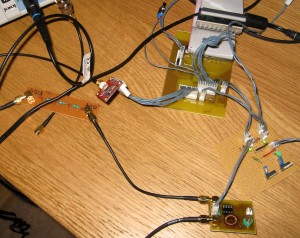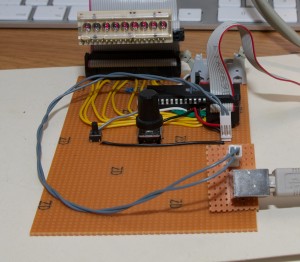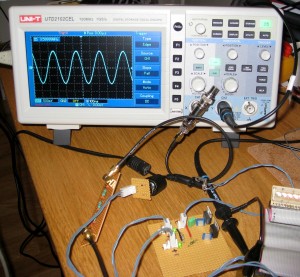RF Mixer
The mixer circuit I decided to start with in my receiver is a simple direct conversion mixer based on the popular SA612. It uses a LC resonant with a hand wound transformer and a trim capacitor to create a band pass filter at about 7MHz, the 40M band. The local oscillator uses a AD9835 chip on a breakout board from Sparkfun (the red pcb) connected via a low pass filter with cut off frequency at about 14MHz.
There is one problem with this approach though, it has very poor selectivity and basically everything you throw at it will get through. I plan to fix this problem by building a new mixer module with two mixers and a narrow crystal filter at about 10MHz as IF filter.
In the image below you can also see my power supply using linear voltage regulators to get 5V and 8V and the current CPU board with the display connected.



